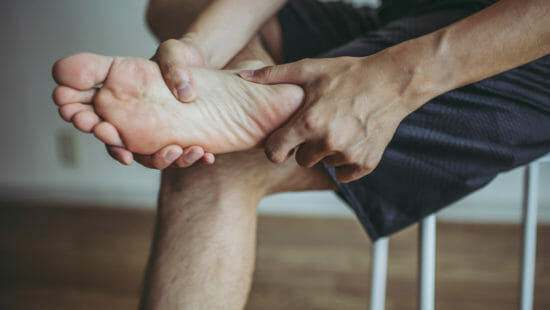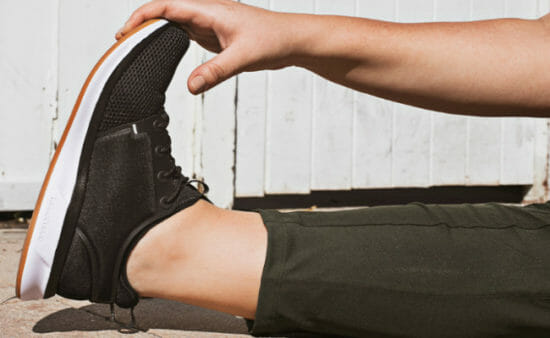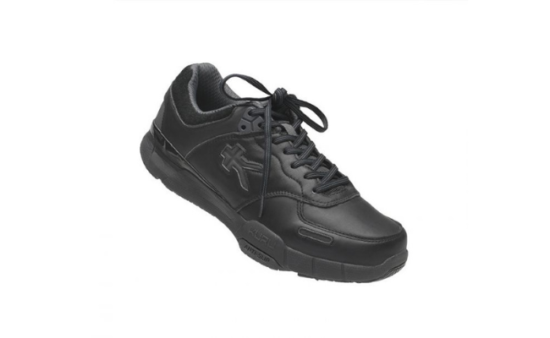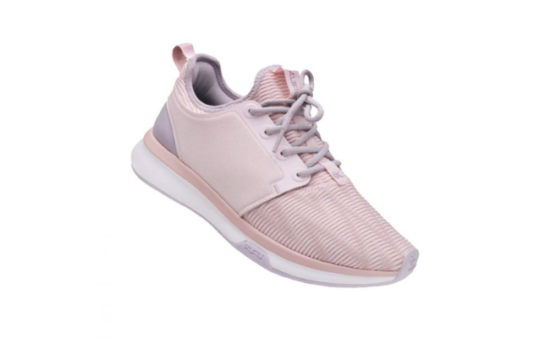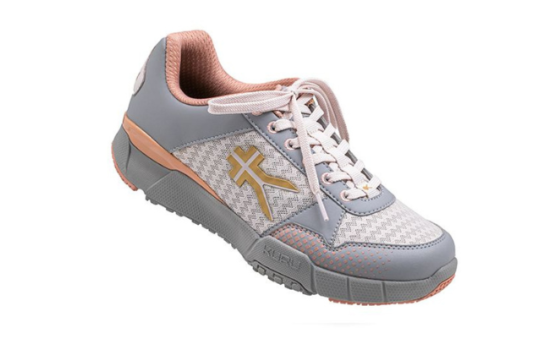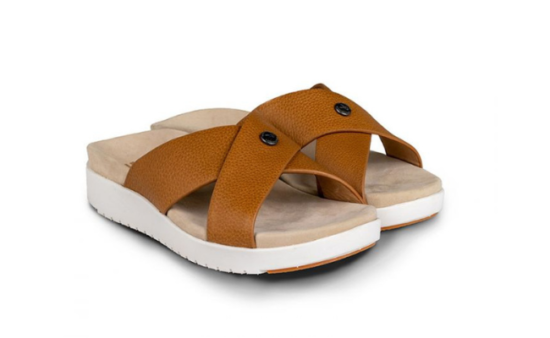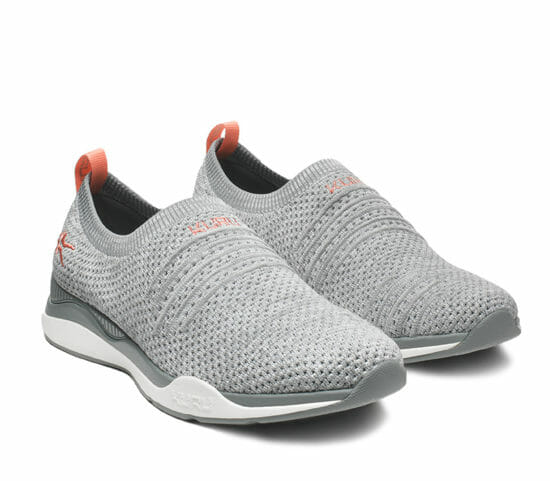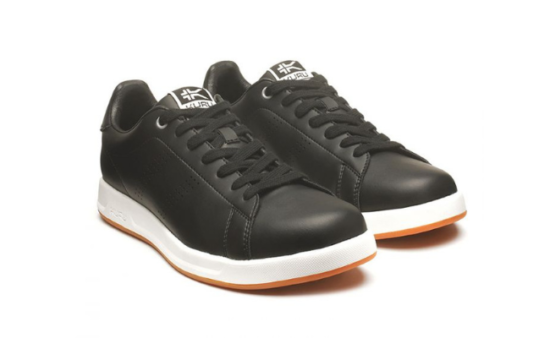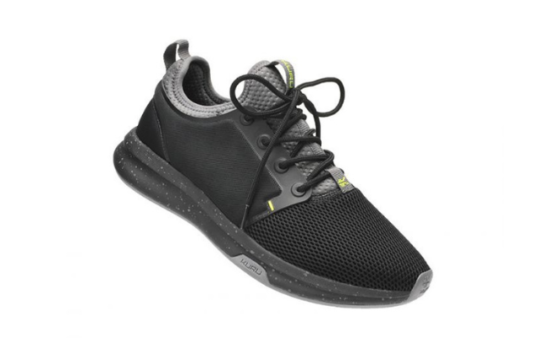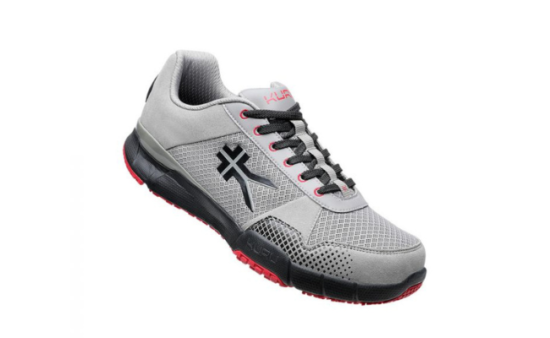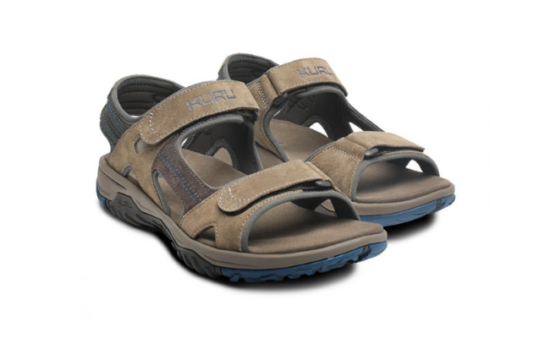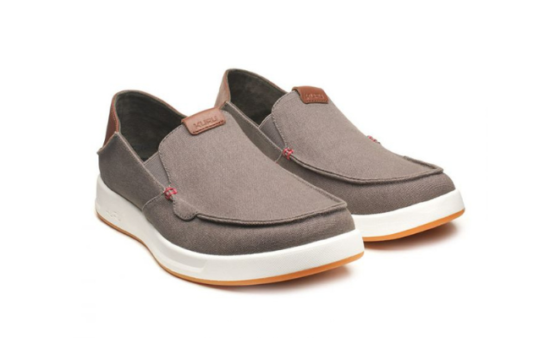Top 10 Shoes for Plantar Fasciitis Relief
Plantar fasciitis pain is a common orthopedic ailment that can produce lingering discomfort in the heel bone. It makes walking nearly impossible. Many runners struggle with this condition, and it can impact day-to-day activities. The positive news is that it can be treated in various ways, including wearing the best shoes for plantar fasciitis.
Prevent foot pain from negatively affecting your lifestyle. In this article, find out more about this prevalent ailment, how to cure it, and how to stop it from happening again. Appropriate plantar fasciitis shoes with arch support, cushioned heel, and other features will help you avoid foot pain.
What is Plantar fasciitis?
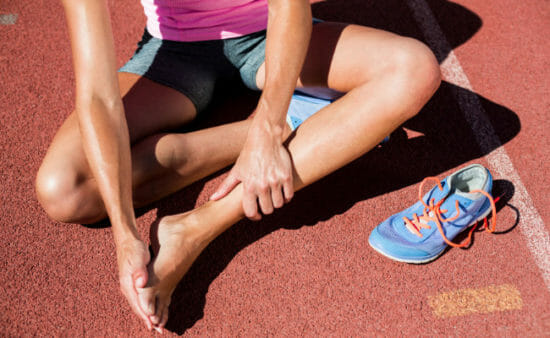
Plantar fascia is a tissue band that extends from the calcaneus or heel bone of the foot toward the base of the toes. Plantar fasciitis is a degenerative inflammation at the origin of this tissue. Because the soles of our feet bear most of our body weight, maintaining the condition of the plantar fascia—which stabilizes the body—is vital.
We walk or run thanks to the springy qualities of our plantar fascia, which produce a bounce-back effect similar to that of the superior shock absorption of a car. If the plantar fascia is damaged, the body has little defense against the impact of walking or running because we lack the shock absorption abilities this tissue gives.
The U.S. Department of Health and Human Services stated that one percent of Americans are affected by this condition. Furthermore, it is the main reason why people experience persistent heel pain. It can be difficult for patients with plantar fasciitis to locate the best pair of shoes to combat this condition.
Plantar fasciitis symptoms
Patients with plantar fasciitis have described both a sharp sensation and a dull discomfort. Plantar fasciitis symptoms include:
Morning heel pain: When you first get out of bed in the morning, you may feel sharp pain. This symptom is the first sign of plantar fasciitis. Intense pain will likely start in your heel as soon as your foot touches the floor. You may suffer a gradual discomfort that spreads from the heel down the bottom of your foot to your toes.
Contracted Fascia: It may feel as though the depths of your feet are clenched, on the verge of hyperextension. When you first start walking after waking up from sleep or after rest. This condition is because your fascia bands appear unable to extend and flex naturally under the weight of your body since they have grown so tight.
Morning Hobble: The gravity of your body pushes directly down on the plantar fascia as you first get out of bed and walk, which may feel like an old, stretched-out rubber band. Because of this, you have to walk quite awkwardly as you try to relieve pain and discomfort on the bottom of your feet.
Continuing Pain: While plantar fasciitis can initially make standing and moving around challenging, it will start to lessen as you go about your morning routine. This condition is due to the fascia band’s gradual stretching and release from hypercontraction. You might not even give it another thought until it happens again the following day.
Continuous morning pain: Pain from plantar fasciitis is infamous for recurring every morning without fail. The stretching out of the fascia will take much longer each morning and become more challenging as time passes. This morning ache may also gradually get worse over time.
Pain Following Prolonged Rest: Plantar fasciitis is known to worsen after sleeping but can also worsen after extended periods of inactivity or sitting down. This condition is due to fascia’s propensity to contract once more while the foot is at rest. As a result, the cycle of agony that began when we first woke up in the morning continues when we get up to walk.
Causes of plantar fasciitis pain
A variety of circumstances can cause plantar fasciitis. Still, the primary offenders typically combine weak foot muscles, high loading brought on by poor body mechanics or genetics, and overtraining. Obesity may also be one of the causes since our heels carry our body’s weight. Here are the most common causes of plantar fasciitis:
Physical Activity: Running, playing basketball, soccer, or tennis, gymnastics, and other sports involving repetitive foot striking can increase your risk of plantar fasciitis. If you are an athlete or a long-distance runner, you are more likely to get plantar fascia problems.
Foot Structure: Do you have fallen arches or flat feet? You are more likely to get plantar fasciitis because when you stand, the entire soles of your feet are likely to touch the ground. High arches can lead to plantar fasciitis because they pressure the heel or ball of your foot. A tight Achilles tendon also increases the risk.
Obesity: Given that the pressure on your feet rises when you are overweight or have recently put on weight, you are more prone to develop plantar fasciitis. Heel pain results from being unable to absorb shock caused by heavy weight, which can harm the plantar fascia.
Occupation: Plantar fasciitis is more likely to develop in those who work in factories, as well as cashiers, waiters, instructors, and other professions that entail standing or walking continuously for long periods.
Pregnancy: Women are more likely to get plantar fasciitis than men are. Pregnancy is one of the possible causes, albeit the exact cause is unknown. Due to the added strain on the ligament, inflammation may develop and cause heel pain. In the third trimester, plantar fasciitis frequently occurs in pregnant women.
Aging: Degenerative changes are inevitable as we get older in our bodies. Mainly, there is a noticeable decline in fascia’s flexibility between the ages of 45 and 65, which impacts its capacity to absorb trauma. Due to this decline, the fascia becomes more brittle and vulnerable to injuries like rips and microtears.
Shoe Styles: The plantar fascia is under extra stress when you wear incorrect shoes, which also impacts your walking. However, wearing worn-out, inferior shoes can hurt and be uncomfortable. Moreover, wearing the wrong footwear might exacerbate any of these problems.
How to get the best shoes for plantar fasciitis
A problematic condition that can be uncomfortable in daily life is plantar fasciitis, which produces pain near the heel. Finding the best shoes for plantar fasciitis will aid, but first, you must comprehend what initially causes plantar fasciitis and get to know your own feet.
The best shoe suggestions come from a podiatrist or physical therapist examining your movement patterns and feet. If you can’t schedule an appointment immediately, we’ve compiled a list of expert-recommended shoes to get you started.
What to consider when buying shoes for plantar fasciitis
Choosing the best shoes for plantar fasciitis that offer both comfort and arch support while looking for the ideal pair to ease your plantar fasciitis symptoms is crucial. Selecting a shoe that suits your foot and feels comfortable is essential for standing and the activities you enjoy.
Strength and support: The foot’s arch aids in supporting and distributing the body’s weight to absorb shock from the forces involved in walking and other weight-bearing activities. Many people with plantar fasciitis also have flat feet or low arches. It would be best if you supported the ankle to decrease the strain on the plantar fascia and its attachment sites.
Comfortable and soft impact: The impact induced by ground reaction forces at the heel, where plantar fasciitis pain is most acutely, can be lessened and softened by cushioning.
Stability: Stability is crucial in the sole and heel cup to avoid overpronation when your foot rolls inward and excessive movement at the heel. Better foot alignment within the shoe might be encouraged by a heel-hugging shoe. Joints above the ankle can also benefit from this posture.
Separatable soles: Removable soles or shoe inserts increase shoe adjustability. They may offer additional features that could be useful for someone with plantar fasciitis. For instance, a rocker sole has a rounded heel and is thicker than your typical sole. For someone whose plantar fascia hurts when they walk and stand, this helps avoid a flat foot surface, which can be irritating.
Arch support: Your feet are kept safe, arch pain is reduced, and overpronation is controlled with footwear that gives reliable arch support and is placed correctly beneath the arch. In turn, the plantar fascia experiences reduced pressure.
Firm heel counter: A sturdy heel counter is necessary for plantar fasciitis footwear. This feature aids in controlling atypical plantar fascia stretching. Additionally, it aids in reducing discomfort and swelling in the heel and arch.
Deep heel cup: To improve heel support and control of pronation and supination, you need the deep heel-cup design. Good walking shoes for plantar fasciitis offer exceptional memory foam cushioning and minimized impact.
Superb cushioning and reduced effect: A walking shoe for plantar fasciitis should offer excellent cushioning and minimized impact. Cushioned shoes with foams that are lightweight and durable are recommended. Furthermore, they permit dynamic flexibility, which reduces pressure and effect.
Here are the Top 10 Shoes for Plantar Fasciitis Relief
One of the most typical reasons for heel discomfort is plantar fasciitis, a widespread issue with feet. The best plantar fasciitis shoes for women cushion and protect your heel for pain relief.
Your foot’s plantar fascia runs the length of it. Daily tension and strain cause injury and swelling to these ligaments, which cause discomfort and stiffness. Most commonly, plantar fasciitis pain feels like a stabbing pain in the heel, but it can also hurt the sole of your foot.
This severe ailment typically comes up as an overuse injury, such as an abrupt increase in physical activity—such as playing sports over the weekend after a week of sitting down. This is why finding the best shoes for plantar fasciitis is important.
We’ll start with the Best Plantar Fasciitis Shoes for Women:
Best Shoes for Working
KINETIC
Women’s slip-resistant shoes provide all-day comfort. The new and enhanced KINETIC has been developed to meet the demands of devoted workers everywhere. KURU Footwear made a point to consider everything.
For instance, leather uppers guarantee good support, long-wear, and a practical, wipeable finish. Reflective windows on the forefoot, heel, and logo also let people see you during nighttime commutes.
A secure shoe is essential for people on their feet all day. The three-hole molded eyelet provides a snug fit and improved traction by brand-new anti-slip rubber that deflects grease, oil, and other liquids. Lastly, flat laces stay knotted throughout your shift.
Best Running Shoes
ATOM
Combine your next workout with the high-performance power of the women’s ATOM. They leveled up all you love about these sporty shoes. You receive bottomless padding that has an exhilarating bounce to support your flight. The ATOM is well reviewed as one of KURU Footwear’s most comfortable sneakers.
It has a medial side flared midsole at the heel and toe-off for a sturdy ride that doesn’t deteriorate with time. In contrast, a smaller forefoot ensures a more performance-oriented fit than QUANTUM’s more roomy fit. This lightweight shoe matches equally well with your gym attire and favorite casual outfit and is ready to become a flexible staple in your collection.
Best Shoes for an Active Lifestyle
QUANTUM
The most flexible and easygoing athletic shoes that KURU offers are these shoes. QUANTUM adapts to the particular curves of your foot, offering you a secure fit and an entirely new range of motion. The KURUCLOUD midsole provides superior arch support.
The casual sneaker style of QUANTUM gives you the comfort of a running shoe for all-day wear. Equally adaptable for your upcoming walk or wandering through Europe. The rounded toe box on QUANTUM is larger than the sporty fitting ATOM. The QUANTUM should be on your shortlist if you enjoy having extra space for your toes to spread out.
Best Sandals
BREEZE
Some women will not wear sandals if there is something in the space between their toes. The most comfortable slide sandal in the world allows you to BREEZE through your day. Some advice against wearing fragile sandals if you suffer foot problems, yet BREEZE has all the support you need!
This ultra-sleek slide has an easy slip-on design that increases comfort by relieving pressure on all the main pressure points! The BREEZE is at your back, providing substantial cushion and bounce in a thin compact. With each step, KURUSOLE flexes dynamically to support your heel. And glide with each effort as the footbed’s quality foams gradually shape themselves to your feet.
Best Casual Shoes
STRIDE
Imagine a seamless, one-piece upper that hugs your heels and has the coziness of your favorite socks. Hot spots are a thing of the past, thanks to this product’s distinctive knitting technique and one-layer design. Stretch zones strategically positioned provide you with the ideal fit. And even barefoot, a smooth, airy design feels lovely.
As a result, the STRIDE fits even the most difficult-to-fit feet, including those with wide feet, high insteps, hammertoes, bunions, and more. You’ll be astounded by how adaptable the STRIDE is. A distinctive feature of the knitted ribbing reinforcements assures you of a secure fit for long days on your feet. You can also use this as dress shoes.
Best Plantar Fasciitis Shoes for Men
A frequent orthopedic condition is plantar fasciitis. The plantar fascia’s ligaments endure a great deal of wear and tear daily. Your foot’s ligaments may rupture or become injured if there is too much pressure on them and if you wear shoes unsuitable for your condition. Plantar fasciitis feels like you have soreness and stiffness in the heels.
Plantar fasciitis may manifest in people with structural foot problems like flat feet. Soft-soled shoes with inadequate arch support can also cause plantar fasciitis. A critical first step to reducing the piercing, stabbing foot discomfort is discovering the best men’s shoes for plantar fasciitis. The unique KURUSOLE technology works together to create the best shoes for plantar fasciitis pain relief.
Best Shoes for Working
ROAM
The casual shoe style ROAM is created with the tested comfort of KURU. ROAM is one of the versatile plantar fasciitis shoes you may wear for various occasions, including work, weddings, and casual outings. They advanced this more than a 40-year-old ageless masterpiece. The ROAM is made to improve the health of your feet, even if you have heel pain, unlike other court shoes.
Imagine a tennis shoe that has been updated for the twenty-first century using the best scientific and biomechanical knowledge. The ROAM dynamically flexes to provide heel support with each step. You can also find the newest materials for top-notch comfort and outstanding sustainability in ROAM. Dress in eco-friendly leather that is butter-soft.
Best Running Shoes
ATOM
The ATOM is the perfect mix between a high-performance shoe and an everyday sneaker. The midsole’s medial side is flared at the heel for both a secure landing and a safe launch at toe-off. The athletic fit of the ATOM last.
Therefore, it is more slender than the wide toe box in our QUANTUM. This shoe is the most versatile foundational piece in your collection of shoes. The ATOM is ideal for your next 5k, the gym, or even just a casual day out. KURU shoes combine the unmatched comfort of KURUSOLE with a design that improves your fitness.
Best Shoes for an Active Lifestyle
QUANTUM
Increasing one’s strength and endurance is the goal of fitness. The QUANTUM will adapt to the specific shapes of your foot, providing a secure fit that unlocks a whole new range of motion and relief for plantar fasciitis. The QUANTUM is the perfect trainer for walking, the gym, or any other form of exercise.
It has a light, breathable material that provides maximum comfort and superb arch support. The QUANTUM allows you to stay connected with your closest friends while pushing your fitness to new heights by enabling you to do more and go further. More than just a pair of shoes, KURUs help you achieve new personal records.
Best Sandals
TREAD
For your feet, these best sandals are similar to four-wheel drive. Despite the roughest terrain, confidence is sparked by the robust, aggressive rubber tread pattern. It’s ideal for all your favorite outdoor activities, such as hiking, strolling, fishing, or anything else you hear the call of nature telling you to do.
With an open design that enhances breathability and airflow, you can feel the wind in your hair and the breeze on your feet. TREAD includes waterproof materials designed to stand up even when conditions are wet—and easy to wipe clean! But there is no river broad enough! A unique non-wicking lining on the footbed also secures your foot even when wet.
Best Casual Shoes
PACE
If you’re a man who enjoys options, you’ll appreciate PACE’s versatility. It could be a shoe or a slip-on. While rushing to the mailbox or working in the yard, are you searching for freedom? You may slide PACE on like slip-on shoes by flipping down the collapsible full-grain leather heel cap. Want to seize the day but need a more secure fit? On your next journey, pop the leather heel up and benefit from the stability and security of a firm heel counter.
When you travel light, this shoe transformer saves space in your suitcase. PACE needed to be more than just a convertible. The sneaker stays light and keeps your feet cool thanks to its natural, breathable canvas. Furthermore, elastic side panels adjust to your movements for an even better fit. This is a great and functional shoe for plantar fasciitis relief.
Conclusion
Plantar fasciitis is a prevalent foot condition that you can treat in various ways. With the right shoes, plantar fasciitis can be relieved without surgery. If you’re experiencing heel pain, don’t disregard the symptoms.
As seen in our list above, the best shoes for plantar fasciitis are available to help you find pain relief. Choose from our recommendations that will surely grant you comfort in your daily life.
FAQs
How do I determine if I have plantar fasciitis?
The foot pain from plantar fasciitis can range from mild and irritating to severe and searing. Some people describe it as a scorching ache that extends from the heel to the ball of the foot. In addition to feeling excruciating foot pain when you first wake up in the morning, prolonged sitting or lying down can also cause this. If you’re unsure, you can seek the help of a podiatrist to determine whether the foot pain you’re experiencing is caused by plantar fasciitis.
Which footwear should you avoid if you have plantar fasciitis?
Flip flops and ballet flats should be avoided, nor should you wear anything lightweight or bending. Avoiding high heels would help since they can strain the ligaments. Instead, our experts suggest you opt for footwear with good arch support, heel cushioning, and a 1-2 inch heel.
What makes plantar fasciitis worse?
Insufficient heel support is the leading cause of plantar fasciitis aggravation. This condition can entail standing for hours on hard surfaces like concrete while wearing the best walking shoes that don’t provide adequate arch support or cushioning. A great walking shoe, such as all those mentioned in this guide, can significantly reduce the likelihood of developing plantar fasciitis flare-ups.
How long does plantar fasciitis usually persist?
That depends on your unique situation. Sometimes, discomfort starts to fade within a few weeks of starting treatment. Nevertheless, bear in mind that full recovery could take several months. In some circumstances, it can even require a whole year.
What are some stretches for plantar fasciitis?
It is beneficial to stretch out the fascia by practicing some of the following general movements 2-3 times a day to prevent recurrent foot pain and edema episodes. These are some common stretches that are recommended in physical therapy. You should perform Plantar fasciitis exercises following a doctor’s consultation.
- Wall-calf stretch: With your back against the wall and your hands on it, extend one leg behind you, keeping it straight with the heel pushed to the floor. Next, bend the other knee toward the wall until the rear of the other leg stretches. Thirty seconds of holding, continue with the opposite leg.
- Entire Achilles stretch: Repeat the Wall Calf Stretch exercise described above, but this time, maintain the leg’s heel on the floor and bend the knee until you feel a stretch along the Achilles tendon.
- Towel Toe Expansion: Sit with your legs before you get out of bed in the morning. Loop a towel behind the tops of both feet and toes. Gently pull the towel in your direction.
- Step Up on the Stair Edge: Stand on the edge of the bottom stair with your toes. Then, the balls of your feet on the rim. Your heels off the stair and hold firmly onto the stair railing. Lift your body slowly onto your toes, maintain, and then release.
- Hamstring stretches for beginners: Feel the stretch along the back of your legs as you stoop over and touch your toes.
How can I prevent plantar fasciitis?
Once your foot is more comfortable, you can alter a few aspects of your lifestyle to prevent plantar fasciitis from recurring. These consist of:
- Select supportive footwear. Wear your athletic sneakers when you’re able to. Avoid wearing high heels.
- Avoid barefoot walking on hard surfaces. This act includes the initial steps you take when you wake up. Plantar fasciitis is frequently felt at the time. Therefore, you should have a pair of supportive shoes by your bed.
- Exercise with minimal impact. Activities like swimming or cycling won’t create or aggravate plantar fasciitis. Stretch your calves and feet once you’re finished. Make circles with your feet and ankles, or curl and relax your toes.
- Stay away from impact-heavy activities. These involve sprinting and jumping. Although, these are hard on your feet and can tighten your calf muscles if you don’t stretch them.
- Watch your weight. You might exert more significant pressure on the bottoms of your feet if you are overweight or obese. Plantar fasciitis can result from that pressure.

